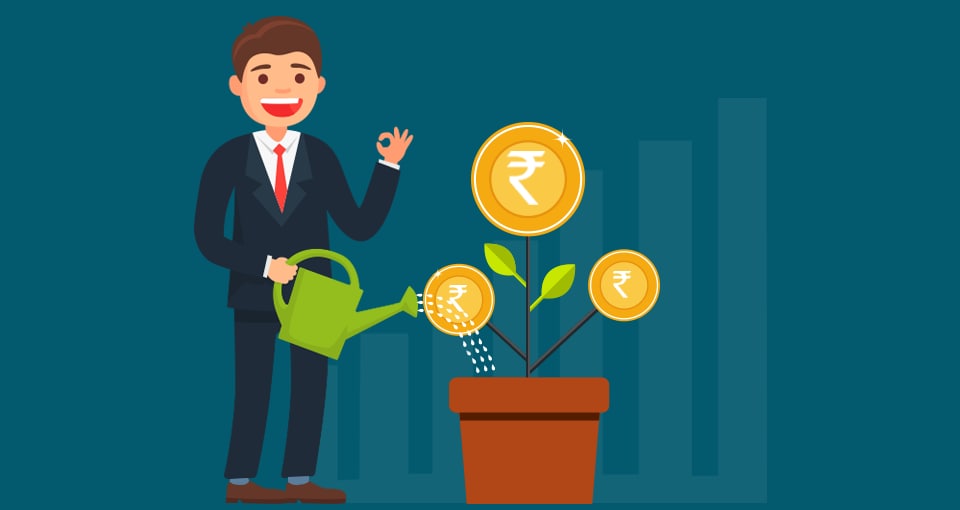Investments in The Renewable Energy Sector in India

Friday, 20th September, saw an estimated 4 million people in more than 1000 cities across 185 countries come together to protest climate change.
Data compiled by the World Meteorological Organisation indicates that the five-year period from 2014 to 2019 has been the warmest on record. In the same five-year period, carbon dioxide emissions have hit new highs and sea-level rise, too has accelerated.
A cursory glance at the Fifth Assessment Report (AR5) prepared by the Intergovernmental Panel on Climate Change corroborates what experts have been saying for years: humans have influenced and impacted the climate system adversely, and if things continue as they are, the future looks bleak.
The case for transitioning to renewable energy sources is clear and stronger than ever and while we are taking steps in the right direction, is it enough?
Renewable energy investment
Investments over the past ten years, between 2010 and 2019, have quadrupled the capacity of renewables, taking it from 414 GW to 1650 GW. Solar capacity is expected to have risen more than 26 times, from 25 GW to an estimated 663 GW. The 2018 capacity investment reached $272.9 billion, three times the investment in new fossil fuel generation.
One long standing argument against investment in renewables was also cost, but the past decade has seen the cost-competitiveness of renewables increase. The levelised cost of electricity is down 81% for solar photovoltaics, and that for onshore wind is down 46%.
While strides were being made in renewable sector investments, emissions too, were on the rise. The past decade saw global power sector emissions rise over 10%.
Investments in the renewable sector around the world
We see companies spearheading the change, flocking to invest in the renewable energy sector, with Google recently announcing its intention to spend over $2 billion in renewable energy infrastructure across the United States, South America and Europe. IKEA, too, recently revealed that it has invested over $2.76 billion in wind and solar energy systems over the past ten years. By 2020, IKEA will produce more energy than it generates, and aims to be climate positive (also called carbon negative) by 2030, meaning, it will reduce more emissions than it puts out. Just to put it in perspective, when renewable sources generated 12.9% of global electricity last year, it helped us avoid 2 billion tonnes of carbon dioxide emissions.
Entire nations, too, are taking stock of the situation and making changes, with Germany announcing its intent to join an alliance of nations to phase out coal. It aims to shut down all the coal-powered plants by 2038.
Renewable energy investment in India
A large portion of the power generated in India comes from renewable sources, namely solar, wind, hydro, and biomass. India must continue to invest heavily in the renewable sector if it hopes to meet the 40% target set during the Paris agreement.
The data above is from a recent report titled Global Trends in Renewable Energy Investment 2019, which looked at investments in renewable energy sources between 2010 and the first half of 2019. India places sixth, having invested $90 billion in renewable energy sources.
A joint study by the International Energy Agency (IEA) and the Council on Energy, Environment and Water (CEEW) found that investments in renewable energy sector in India doubled over the last five years. Consequently, tariffs too, have gone down. Solar tariffs in India were at a record low of ₹2.44 per unit and wind power tariffs were at a record low of ₹2.64 per unit.
Over the years, the need to invest in clean energy projects has become increasingly urgent. Energy accounts for two thirds of total greenhouse gas emissions, we see initiatives like the Climate Investment Platform (CIP) that aims to increase the flow of capital in developing countries to meet climate ambitions.
Addressing the climate summit in New York on 23rd September, Prime Minister Narendra Modi also vowed to increase India’s renewable energy creation capacity target to 450 GW by 2022, more than double India’s commitment of 175 GW under the Paris Climate Agreement. Seeing the Indian government make such a huge commitment leaves on optimistic, however what is important is following through. Only by investing heavily in the renewable energy sector can we hope to unlock a sustainable future for both India and the world. Some mutual funds, too, have started investing sustainably, keeping in mind, among others, environmental factors. You can head on over to Bajaj Markets for a hassle-free experience of investing in mutual funds without paying brokerage.
Bajaj Markets, a subsidiary of Bajaj Finserv, is a one-stop digital marketplace that has been created for consumers on the go. It offers 500+ financial and lifestyle products, all at one place. At Bajaj Markets, we understand that every individual is different. And that’s why we have invested in creating a proposition – Offers You Value. A value proposition that ensures you get offers which are tailor made for you. We also offer an amazing product range and unique set of online offers across Loans, Insurance, Investment, Payments and an exclusive EMI store. Be it in helping you achieve your financial life goals or offering you the latest gadgets, we strive to offer what you are looking for. From simple and fast loan application processes to seamless and hassle-free claim-settlements, from no cost EMIs to 4 hours product delivery, we work towards fulfilling all your personal and financial needs. What’s more! Now enjoy the same benefits in just one click with our Bajaj Markets App.
